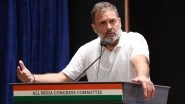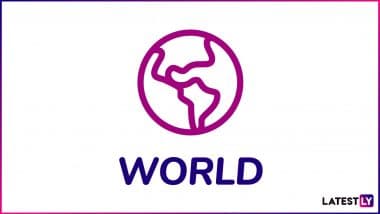Washington, Dec 11 (PTI) Ahead of the the 2+2 ministerial level dialogue between India and the US next week, a top American diplomat on Wednesday said that under the Trump administration the dialogue has become principal mechanism between the two countries for translating strategic convergence into tangible outcomes.
External Affairs Minister S Jaishankar and Defence Minister Rajnath Singh will arrive here next week for the second round of '2+2' dialogue with their US counterparts Secretary of State Mike Pompeo and Defence Secretary Mark Esper on December 18.
The inaugural '2+2' Indo-US dialogue was held in New Delhi in September last year.
"In New Delhi, there's been a growing consensus that no relationship matters more when it comes to advancing India's economic and security interests as well as its global aspirations," Acting Assistant Secretary for South and Central Asia, Alice G Wells, told a Washington audience.
“Now, the 2+2 dialogue has become the principal mechanism under the Trump administration for translating this strategic convergence into tangible outcomes. It's really contributed to a sea change in recent years and how we do things with India,” Wells said.
The outcomes are finally matching the rhetoric, Wells said in her address to “Commemorating the 60th Anniversary of President Eisenhower's Historic Visit to India” organised jointly by the South Asia Center of the Atlantic Council and The Asia Group.
In her remarks ahead of the US visit by the Indian Defence and External Affairs ministers, Wells said the service to service inter-operability is going to continue to grow as the two countries continue work towards concluding outstanding defence enabling agreements.
“For example, the industrial security agreement will allow for new avenues of collaboration between our private sectors on defence researching and co-development,” she said. The Industrial Security Agreement has not been signed yet and is in the final stages of being negotiated.
Wells said, "There is a new comfort level between the diplomats and development experts when it comes to working together, whether it's in the QUAD, whether it's on maritime issues, on joint projects like the MCC supported Nepal-India power line, or even in routine consultations in capitals around the world."
Regional co-operation, she said, is the second important area of India-US ties. Quad comprising of India, US, Australia and Japan, formed two and half years ago, is an important step forward in aligning like-minded powers behind the principle of a free and open Indo-Pacific.
A few weeks ago, India hosted a successful counter-terrorism table-top exercise among QUAD. QUAD cyber experts are meeting this week to discuss shared challenges in cyberspace, including cybercrime and 5G.
Observing that India uses its engagements with the US to expand its strategic horizons, she said maritime security is just one example.
Following the conclusion of the US-India logistics agreement in 2016, India has concluded similar agreements with a number of close partners. “As we grow our Naval cooperation, we're seeing India broadening its maritime footprint with partners including through the launching of an Indian fusion centre,” she said.
“Our increased consultations on regional issues will be a central component of the upcoming two plus two where we envision in depth discussions on a range of pressing issues, whether it's Afghanistan, terrorism, regional connectivity, and the Indo-Pacific,” Wells said.
Noting that people-to-people, is traditionally the very strong pillar in this bilateral relationship, Wells said the Howdy Modi event in Houston in September captured in a powerful way the close rapport between President Donald Trump and Prime Minister Narendra Modi as well as the bonds between the people.
"Over a record 200,000 Indians coming to study in the US contribute more than USD 7 billion to the US economy. At the same time, scientists are working together more closely than ever, including on space situational awareness, human space flight and joint research," Wells said.
Scientists from NASA and ISRO are in the advanced stages of building the NCER earth observation satellite, which will be one of the most cutting edge of its type.
“At the 2+2, we seek to elevate our partnership even further. We're going to increase cooperation on water management, disaster relief, science and technology, peacekeeping judicial cooperation and people to people exchanges, including between innovators and parliamentarians,” she said.
(The above story is verified and authored by Press Trust of India (PTI) staff. PTI, India’s premier news agency, employs more than 400 journalists and 500 stringers to cover almost every district and small town in India.. The views appearing in the above post do not reflect the opinions of LatestLY)













 Quickly
Quickly












